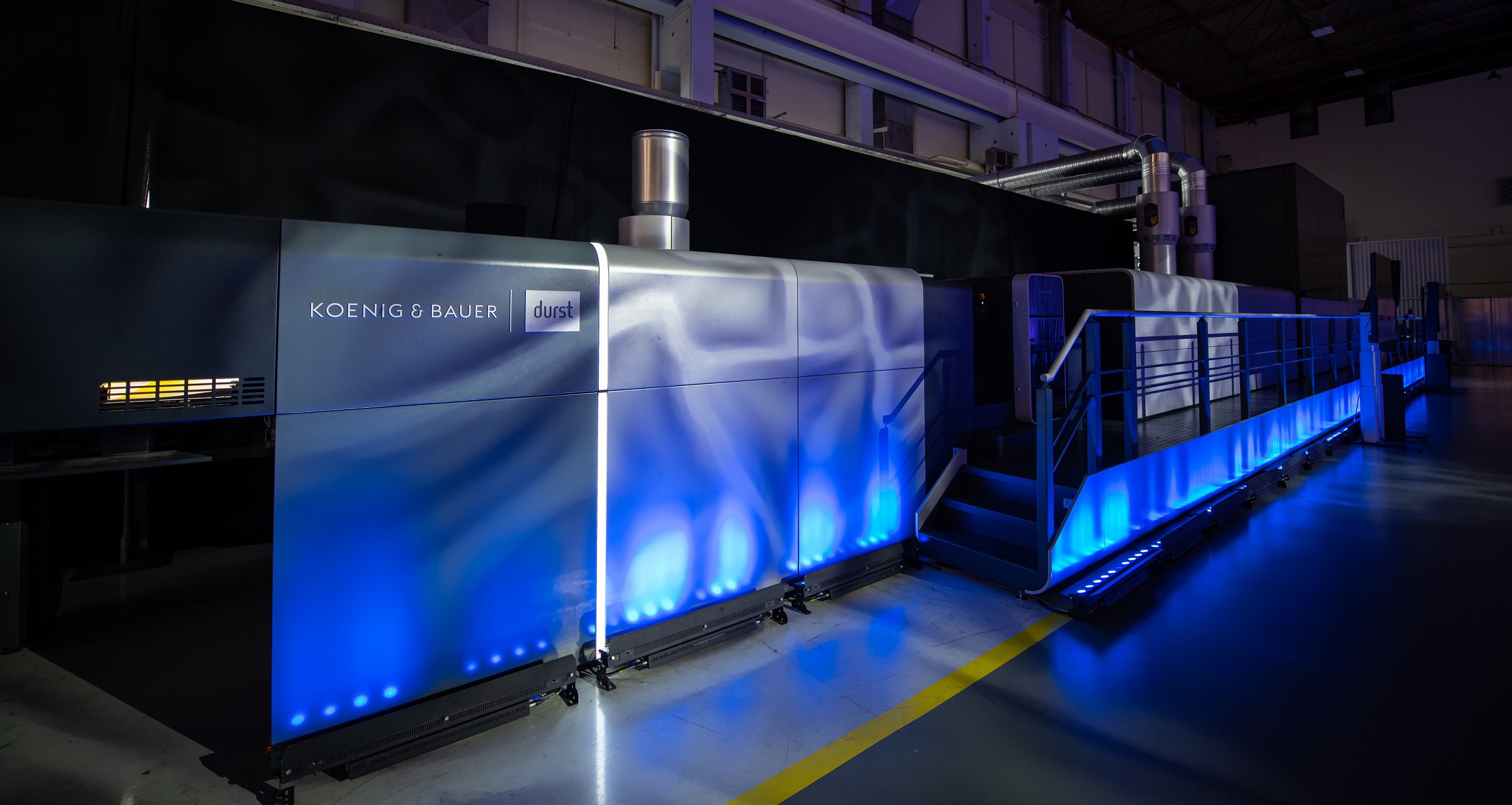
Features
Digital Printing
Packaging
Printing
Koenig & Bauer Durst launches VariJet 106
October 15, 2021 By PrintAction Staff

Koenig & Bauer Durst GmbH unveil the VariJet 106, a modular single-pass sheetfed digital printing press for the folding carton market.
Jointly developed by Koenig & Bauer and Durst, beta testing is due to start in the coming weeks. The first units of the VariJet 106 will be installed at customer sites in Europe and America in the second half of 2022. Target groups include pharmaceuticals, cosmetics, tobacco and food industries, as well as folding carton converters.
The VariJet 106 is based on water-based inkjet processes to provide high print quality. The digital printing system is at the heart of the collaborative development between Koenig & Bauer and Durst. The VariJet 106 platform is based on Koenig & Bauer’s standard high performance Rapida 106 platform and Durst printhead electronics, inkjet expertise and Durst workflow and RIP technology. This includes Durst Analytics, Smartshop and Workflow.
Using seven colour water-based food compliant inkjet technology (CMYK plus orange, green and violet), the VariJet 106 is suitable for food applications that meet the stringent requirements for food safe primary packaging utilizing proprietary water-based ink technology. The VariJet 106 can produce personalized and individualized print products or alternate between short and medium runs.
Koenig & Bauer and Durst first announced they had joined forces and set up an independent joint venture company in 2019. The VariJet 106 is the first product jointly and developed by the two companies.
Robert Stabler, managing director, Koenig & Bauer Durst, said, “We are really excited by the progress we have made and the opportunities with our VariJet 106 despite these testing times. We have beta sites at an advanced stage of planning. These potential customers already have a vision for mass customization. Feedback from our customers is that shorter run lengths, mass customization and the need to be more agile are the compelling reasons for moving to digital production.”
Print this page